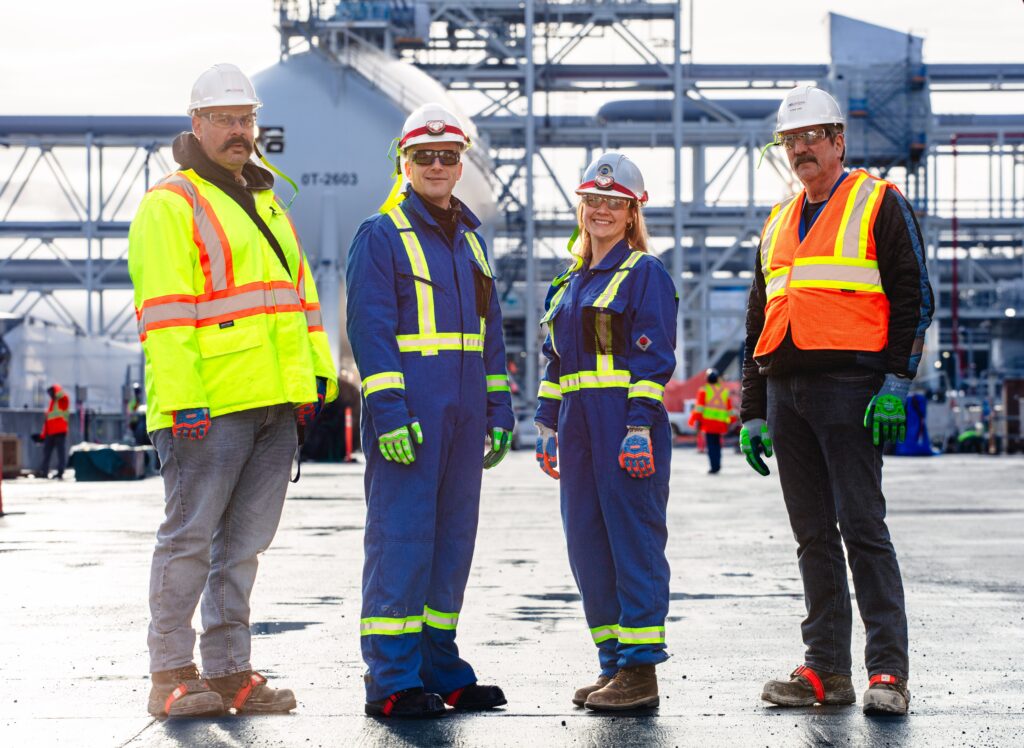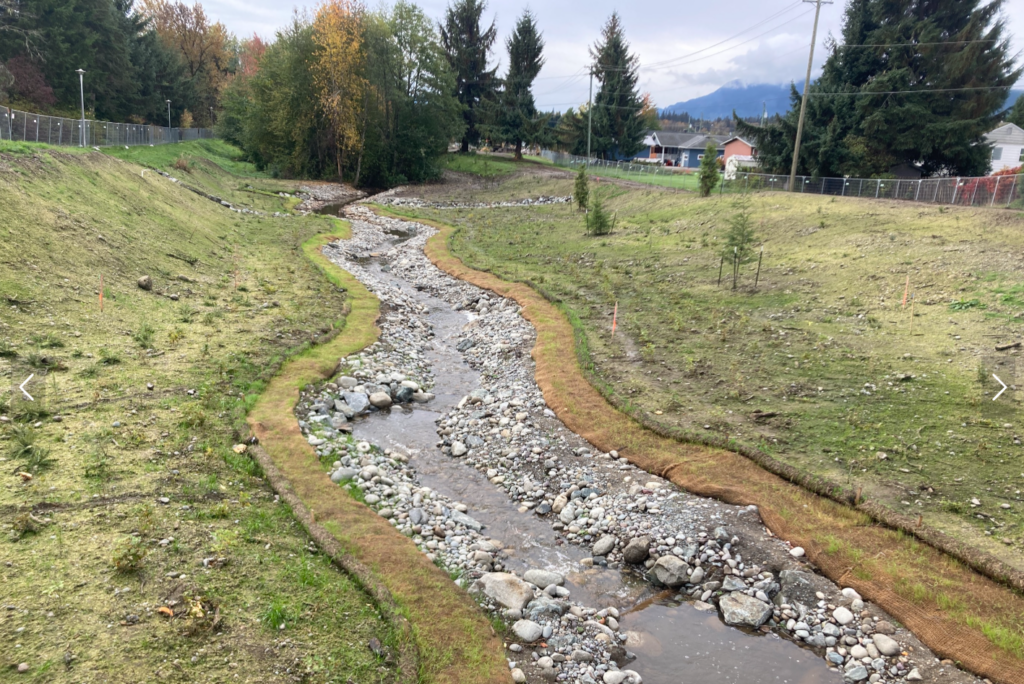Jan 14, 2019
LNG Canada raised the bar on consultation process with First Nations
Share
LNG Canada made headlines last October when it announced that it was proceeding to build a massive liquefied natural gas (LNG) export terminal in coastal Kitimat, B.C. to bring the province’s natural gas to overseas markets. What was less covered was the literally years of consultation and engagement that resulted in approximately 25 individual agreements with affected Indigenous groups by LNG Canada and Coastal GasLink (the owner and operator of the 670-km pipleline that will deliver gas to the LNG export terminal). These agreements were signed by elected officials on behalf of their more than 15,000 members.
The negotiations for LNG Canada, a large-scale, complex project consisting of constructing an export facility and a lengthy pipeline, were not a slam dunk by any means. Many proposed energy projects have been quashed because their proponents couldn’t answer the right questions to the satisfaction of affected First Nations, weren’t clear in their commitment to the environment, failed to honour traditions or failed in their commitment to share project benefits. LNG Canada succeeded where those projects failed.
Karen Ogen-Toews is the former Chief of the Wet’suwet’en First Nation and CEO of the First Nations LNG Alliance. She was part of the Coastal GasLink pipeline negotiations beginning in 2013 in her capacity as Chief.
“The proponents were very inclusive and listened to our concerns,” she recalls. “We did our own due diligence to make sure that we received what we needed in every area that was important to us and generally made sure our bases were covered.”
As Chief of the Wet’suwet’en First Nation, Ogen-Toews was responsible for setting the form and direction of community consultation.
“One of our requirements for negotiating the project was that our Hereditary Chiefs be taken on site visits to the proposed routes of the pipeline,” she says. “Together, we identified berry-picking sites, fishing sites and ceremonial sites that were to be left intact and not disturbed by pipeline construction.”
She also notes that any issues were dealt with at the band council and community levels, so that these issues wouldn’t be escalated through the consultation process.
As current Chief Councillor of the Haisla First Nation, Crystal Smith recalls the intricate negotiations that began in 2013 and helped to forge a positive relationship with LNG Canada. The Haisla has had engagements with both LNG Canada and Coastal GasLink and has signed agreements with each in support of both the facility and the pipeline. During that period, she was both a council member and executive assistant to Chief Councillor Ellis Ross.
“There was a lot of work just from the council perspective,” she says. “Often First Nations communities aren’t participants in negotiating something of this magnitude.”
The revenue sharing agreement was a critical part of negotiations, because shared economic benefits could be used to improve the lives of First Nations’ community members in ways that aren’t possible under government granting systems.
“We’re not talking about short-term benefits,” she says. “These benefits will be shared by our community for many future generations. With LNG Canada, we’ve laid the foundation for how our relationship will work, far into the future.”
Ellis Ross, who was elected Liberal MLA for Skeena in 2017, also recalls his tenure as Chief Councillor with Haisla First Nation.
“Successfully negotiating environmental considerations, cultural accommodations and economic benefits is difficult for the proponent to pull off, because rules and regulations prevent you from going too far for one specific group of people,” he says. “We were particularly impressed that they incorporated our views into the environmental assessments and permits before they filed for them. When my band received a referral from the Crown regarding these applications, we were always able to tell them that our concerns had already been incorporated and that they could go ahead and issue the permit. The B.C. government is now trying to use the process for Kitimat as a template for future negotiations.”
The absence of signed treaties in British Columbia required LNG Canada and Coastal GasLink to go about consultation and engagement differently.
Separately permitted to be built, owned and operated, the LNG Canada and Coastal GasLink projects are inextricably linked, as the pipeline is required to transport natural gas from the Montney in northeastern B.C. to the export facility in Kitimat. It will be the only pipeline serving the facility, and LNG Canada cannot move forward without the pipeline in place. The construction schedules of the two projects are also closely linked to ensure no delay and seamless delivery of B.C.’s clean-burning natural gas to energy-hungry markets overseas.
“We worked to build relationships well before we built the project, because we knew that if we didn’t establish trusting relationships with Indigenous groups impacted by our project, we wouldn’t gain the permission we needed to proceed,” says Susannah Pierce, Director External Relations for LNG Canada.
The level of support received by LNG Canada and Coastal GasLink from 25 elected First Nations at the facility and along the pipeline route, and from northern communities, is viewed by many as unprecedented for a resource development project.
Despite the opposition Coastal GasLink is currently facing, despite their many years of work and the significant investment made to train workers, sign contracts and develop strong bonds with First Nations and northern communities, Pierce says LNG Canada has no intention to do anything but move forward as planned.
“There needs to be recognition and respect for the 25 First Nations, their more than 15,000 members, northern communities and the many thousands of individuals living there that have put considerable effort and due diligence to come to a decision to support our project,” says Pierce. “We also respect the rights of individuals to peacefully express their points of view, as long as their activities do not jeopardize people’s safety and are lawful. We sincerely hope that relationships among Indigenous people who support and oppose LNG development in British Columbia can be mended and healed, as we believe that finding a peaceful way forward is in the best interests of everyone involved.”
“LNG Canada recognizes it just might not be possible to get unanimous support for major infrastructure projects in B.C.,” Pierce says. “But the significant support we do have led to the receipt of all permits and licenses required to move our project into construction, which is what we are doing.”
“Canada’s economy cannot prosper without a growing and healthy resource sector,” according to Pierce. “Projects like LNG Canada’s provide an opportunity that many First Nations and northern communities have not had before and may never see again.”
By Peter Kenter. Originally posted on The Vancouver Sun, on January 11, 2019.


